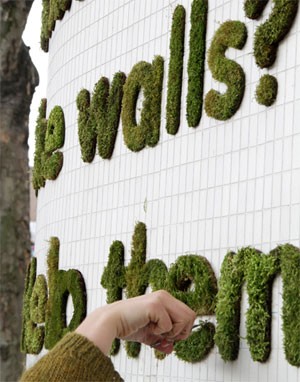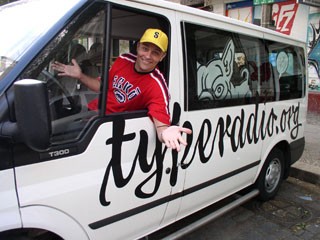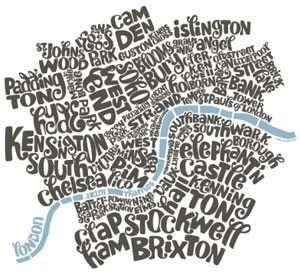 This picture is from Anna Garforth’s Climate cops project. She says:
This picture is from Anna Garforth’s Climate cops project. She says:
Several of Britains most prestigous and distinguishd buildings were transformed into mossy hot spots to celebrate the launch of the npower Climate Cops Green Fingers competition. The initiative aims to help kids in urban schools develop ‘greener fingers’ and is offering a chance to primary schools to win a growing make over.
The moss says “Kids climbing walls. Help them bloom.”
![]() See more pictures of constructing and installing the moss type here. See more of Garforth’s work and installations, including paper cutting and origami here. (First seen here.
See more pictures of constructing and installing the moss type here. See more of Garforth’s work and installations, including paper cutting and origami here. (First seen here.




